Some of the links in this post may be affiliate links.
Marble Queen Pothos is a stunning cultivar of Epipremnum aureum and it has gorgeous, highly variegated leaves. If you are looking for a showier Pothos (more so than the more common Golden Pothos), Marble Queen will meet your needs! All varieties of Pothos make wonderful low maintenance and low light indoor plants, and Marble Queen sure packs a punch.
Keep reading to learn all about how to care for this stunning foliage plant.
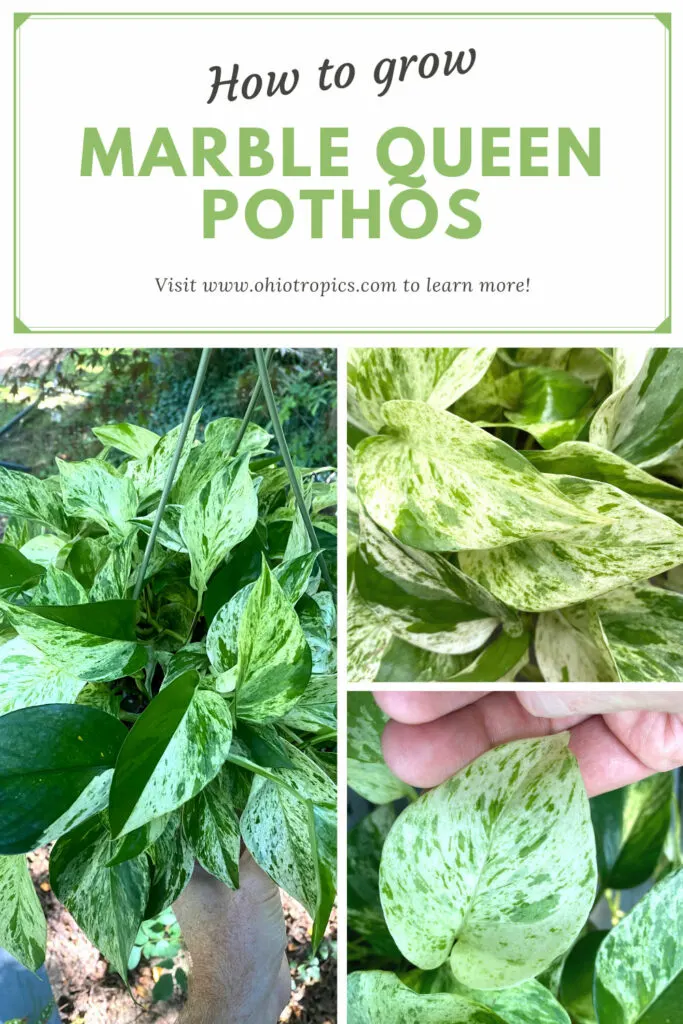
Epipremnum aureum is native to French Polynesia, but has become naturalized in many tropical and subtropical regions. It can grow both as a ground cover, as well as climbing up trees.
Their ease of care, long cascading vines, and stunning foliage make for a perfect plant for any houseplant collection.
‘MARBLE QUEEN’ POTHOS CARE
How much light does a Marble Queen Pothos need?
Pothos are very resilient plants, but highly variegated Pothos such as Marble Queen need a little more light than greener Pothos.
The more variegated a plant is, the less chlorophyll it has, and the more bright light it needs in order to encourage more vigorous growth.
You will find that plants that have a lot of variegation will grow slower than their greener counterparts, so this is why it is extra important to give your plant the appropriate light conditions.
Situate your Marble Queen right in front of a window for best growth. Windows with no direct sun and just bright indirect light are great for Marble Queen, but you may find that a brighter window (such as Eastern or Western exposure windows) with some direct sun may benefit your plant!
Avoid all day sun, but 2-4 hours of direct sun indoors is beneficial for growth.
If your home is very dim and you don’t have much natural light, you can supplement with a grow light, or even grow exclusively under a grow light.
How to increase variegation for Marble Queen Pothos?
In order to encourage the best variegation for your plant, try and provide the best light that you can, per the recommendations in the previous section.
Light is the most important factor for growth and variegation. If you find that your plant is reverting to grow all green leaves, despite your plant growing in bright light, read the Common Problems & Questions section near the end of this post for recommendations.
How cam I make Marble Queen Pothos grow faster?
Besides providing enough light, you should regularly fertilize during the growing season. This will help your plant grow faster.
My favorite liquid fertilizer is Dyna-Gro Grow (link to Amazon). I use it on almost all my houseplants, and is an amazing urea-free fertilizer that has all the micro and macro nutrients needed for plant growth. I’ve achieved wonderful results and I know that you can too!
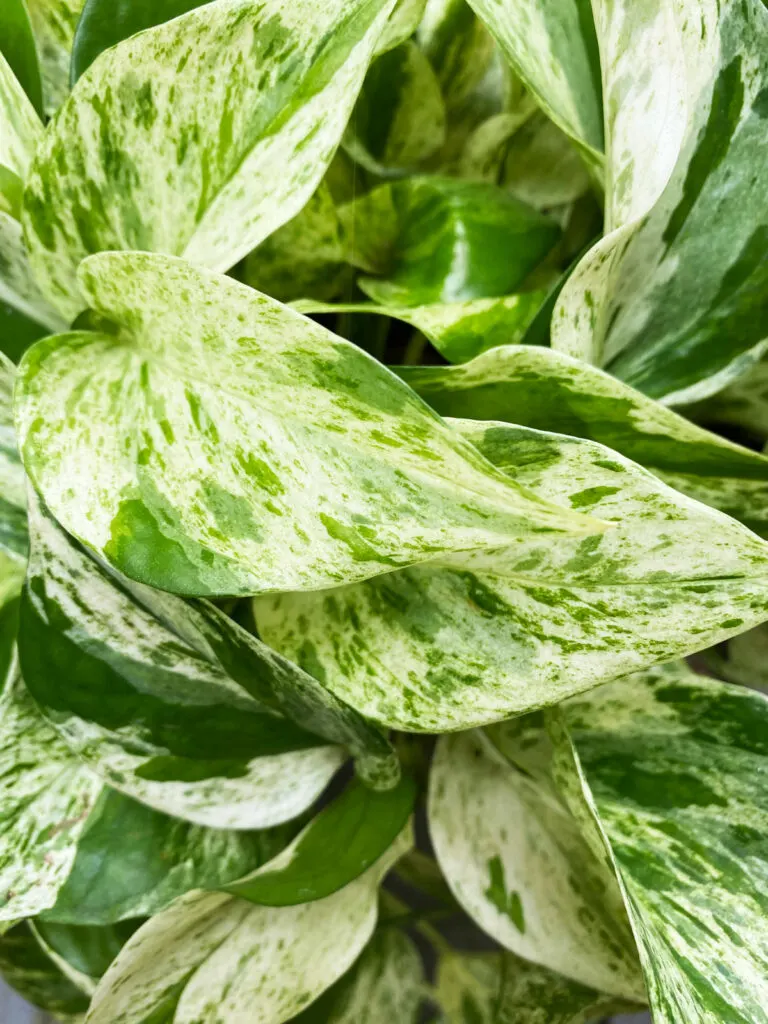
How often should I water my Marble Queen Pothos?
I never recommend a frequency of watering for your plants. This is because everyone’s conditions are different, so this affects how quickly the potting mix will dry out.
Although it would be convenient for me to tell you to water once per week, this is not the best recommendation because all of our environmental conditions are different.
I like to judge soil moisture by using my finger to feel the potting mix. A good rule of thumb is to water when the top inch or so of the soil has dried out.
Pothos do not like to go completely dry.
At the same time, always make sure that your plant is in a pot with a drainage hole. All excess water needs to drain away. If your pot is sitting on top of a saucer, be sure to empty the saucer of any excess water that may have accumulated.
Water logged conditions can cause root rot.
What kind of soil does Marble Queen like?
Any good quality, well drained soil will do. I like to use 3 parts of Miracle Gro potting soil plus one part perlite. This produces a nice, fluffy potting mix that drains well.
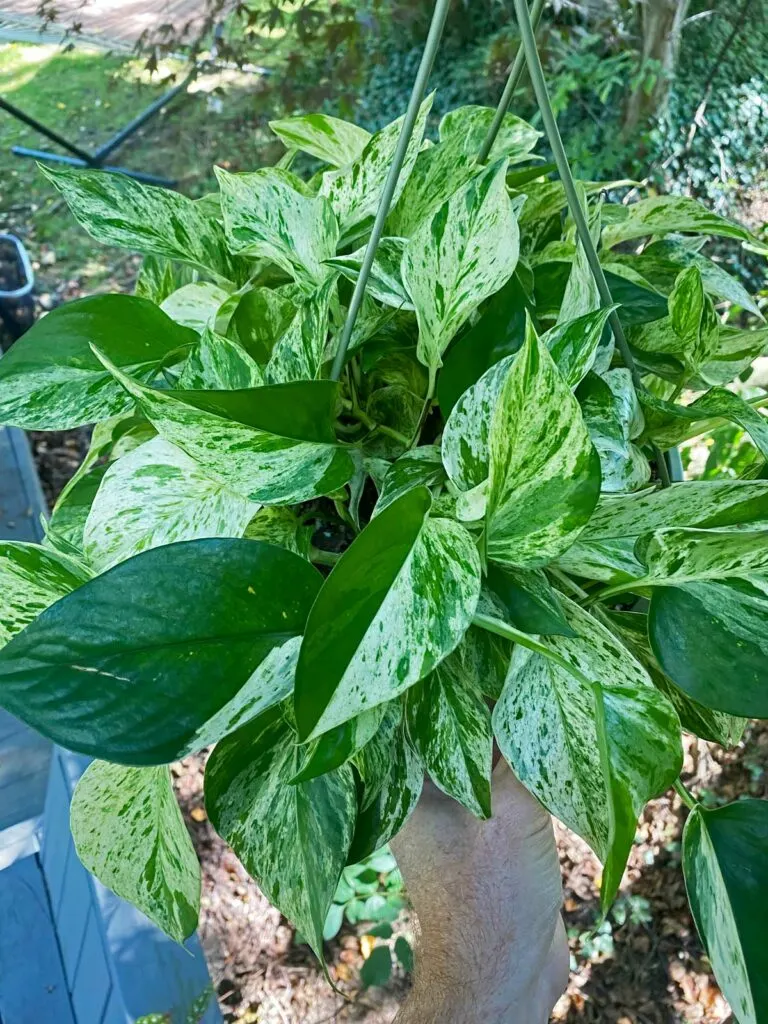
If you’re looking for an amazing potting mix that you can use straight out of the bag for your Pothos, check out the Tropical Climber Soil Blend from Oh Happy Plants. This is an amazing mix and you will get 10% off at checkout automatically if you use my link.
What temperature and humidity is good for Marble Queen?
For optimal growth, Pothos plants definitely like warm temperatures. The will mope and sulk in cold temperatures.
Indoors, I would recommend minimum temperatures no less than the low 60F range, and temperatures in the daytime should be warmer.
Before I replaced my sunroom windows, it was too cool and drafty and my Pothos plants just sat there and didn’t grow much at all.
Growth will definitely be more rapid in warmer growing conditions.
As far as humidity goes, average indoor humidity is just fine! Pothos are not picky with humidity, though if you can provide high humidity, it will definitely benefit your plant.
COMMON PROBLEMS & QUESTIONS
Snow Queen Pothos vs. Marble Queen Pothos
Marble Queen and Snow Queen cultivars look very similar. The variegation in Snow Queen tends to be more consistent and it also has a lot more white variegation than Marble Queen.
Check out my pothos varieties blog post to visually see the difference between the two, and also explore several other kinds including neon pothos, jade pothos, and several other gorgeous varieties!
Why is my Marble Queen pothos reverting to all green? How do I keep my marble queen pothos white?
Variegated plants can sometimes be unstable, and sometimes will produce solid green leaves. If you encounter this, you should prune off the portion of the vine with solid green leaves and this will encourage white variegation in the new growth.
I go through exactly how to do this in my post: Marble Queen Pothos Losing Variegation? Here Are 2 Fixes!
Take a look at the follow three photos. These are all leaves off of the SAME Marble Queen plant.
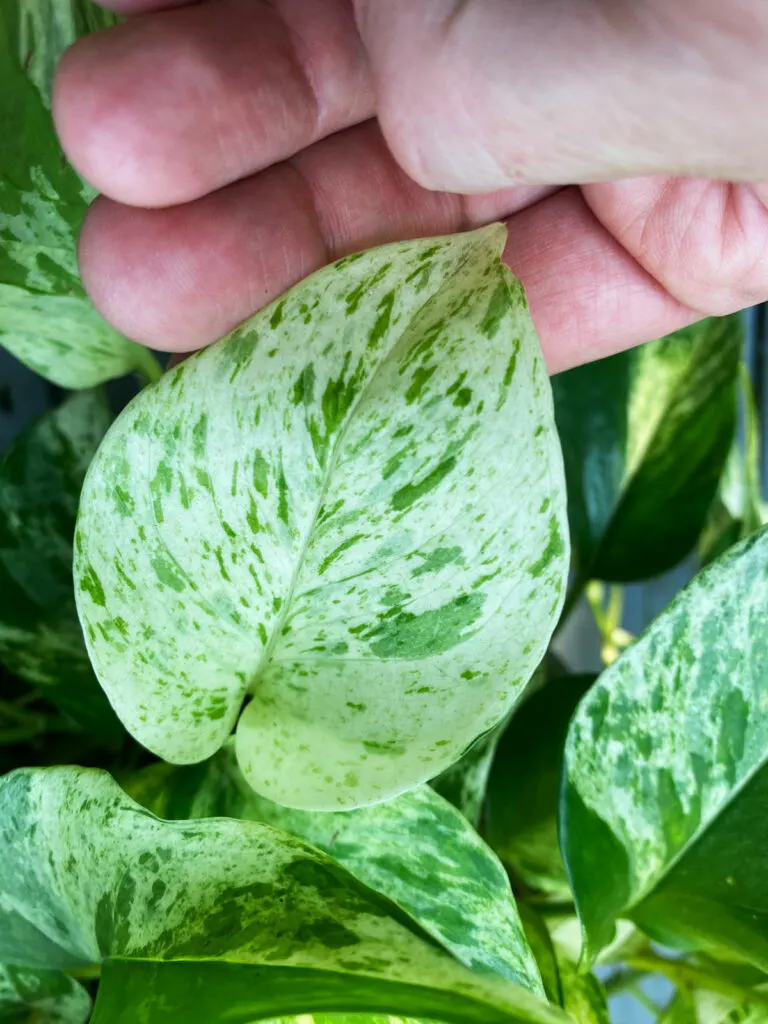
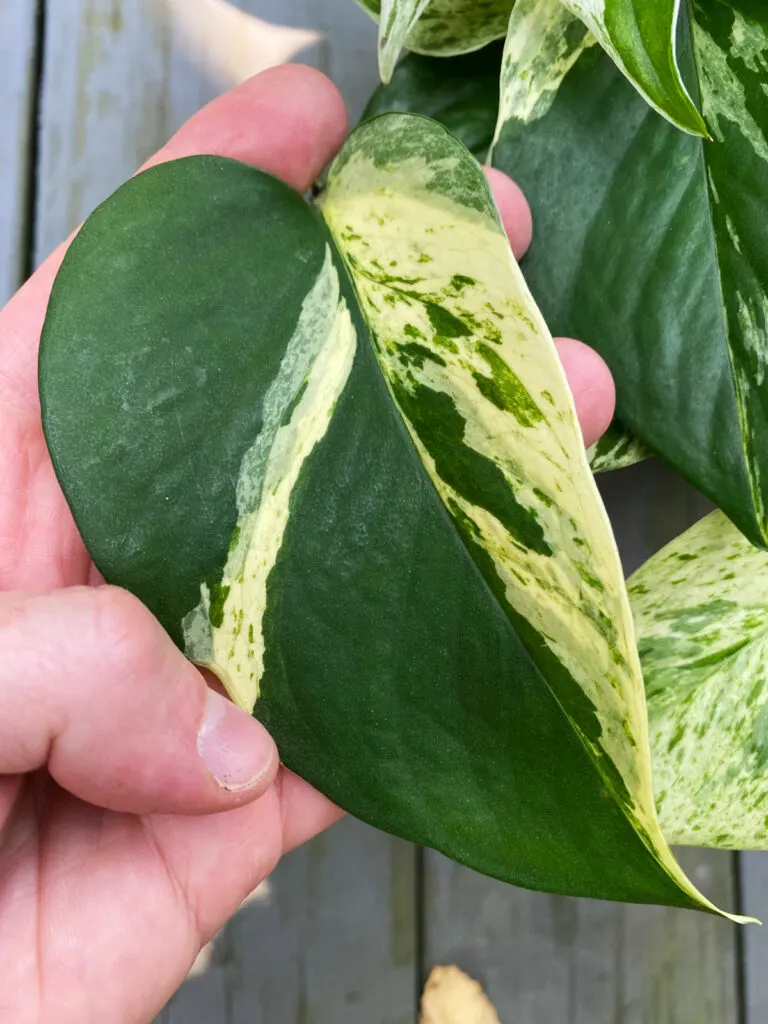
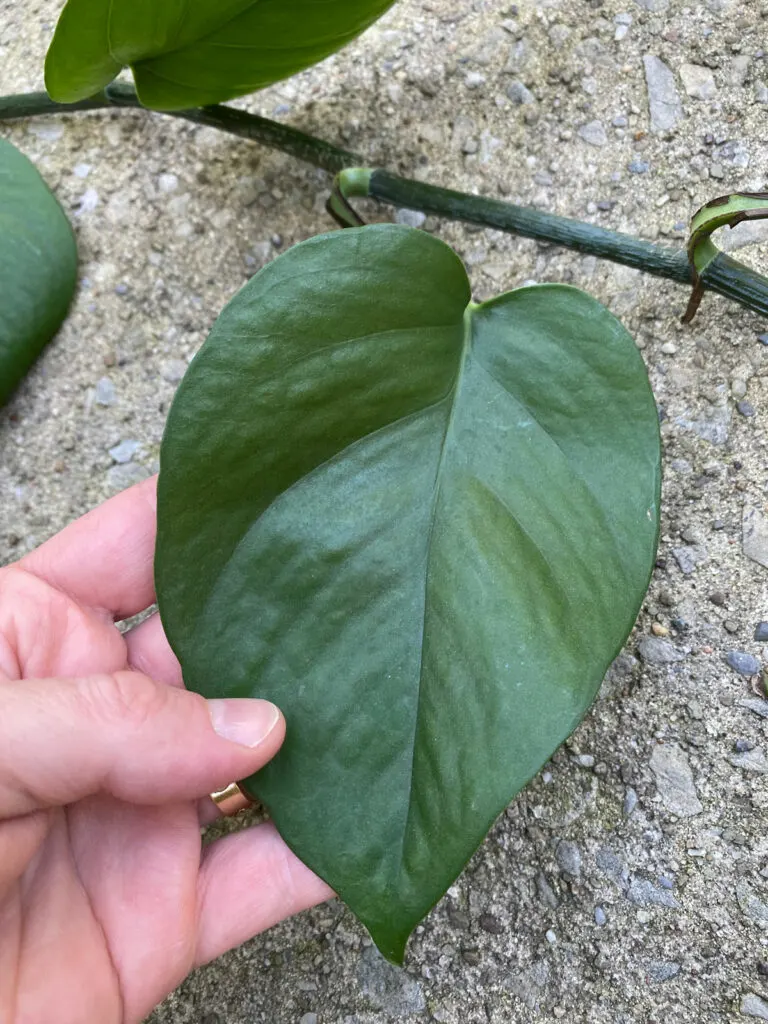
Why is my marble queen pothos droopy?
If you notice that your plant is droopy, immediately check your soil moisture. Chances are that your plant has either gone bone dry, or it has stayed wet for far too long and is starting to experience root rot.
If your soil is bone dry, go ahead and give it a really good soaking and it should recover well if you didn’t wait too long.
If your potting mix stayed wet for too long, determine the cause. Has it been sitting in water in a saucer, or maybe it’s a pot with no drainage? Discard any excess water that you see. Good drainage is a MUST!
If you do have your plant in a pot with no drainage hole, transplant it into a pot that does.
Why are the tips of my Marble Queen pothos brown?
This is typically caused by two things.
Potting mixes that repeatedly dry out completely will cause brown leaf tips.
Bone dry air or really low humidity can also be a culprit sometimes.
Why is my Marble Queen getting yellow leaves?
The most common reason for yellow leaves in Pothos is the potting mix having gone completely dry for too long. In this case, you will notice quite a few yellow leaves.
If this has happened, remove any yellowed leaves and give your plant a good, thorough soaking and try not to let it dry out excessively in the future.
Is Marble Queen Pothos toxic to cats?
According to the ASPCA, it is toxic to cats and dogs due to insoluble calcium oxalates.
How Can I propagate Marble Queen Pothos?
The best way to propagate and make the most of your plant material is by single leaf node cuttings. Refer to my detailed blog post, Where to Cut Pothos to Propagate, for step by step instructions with photos. This will work for any Pothos variety!

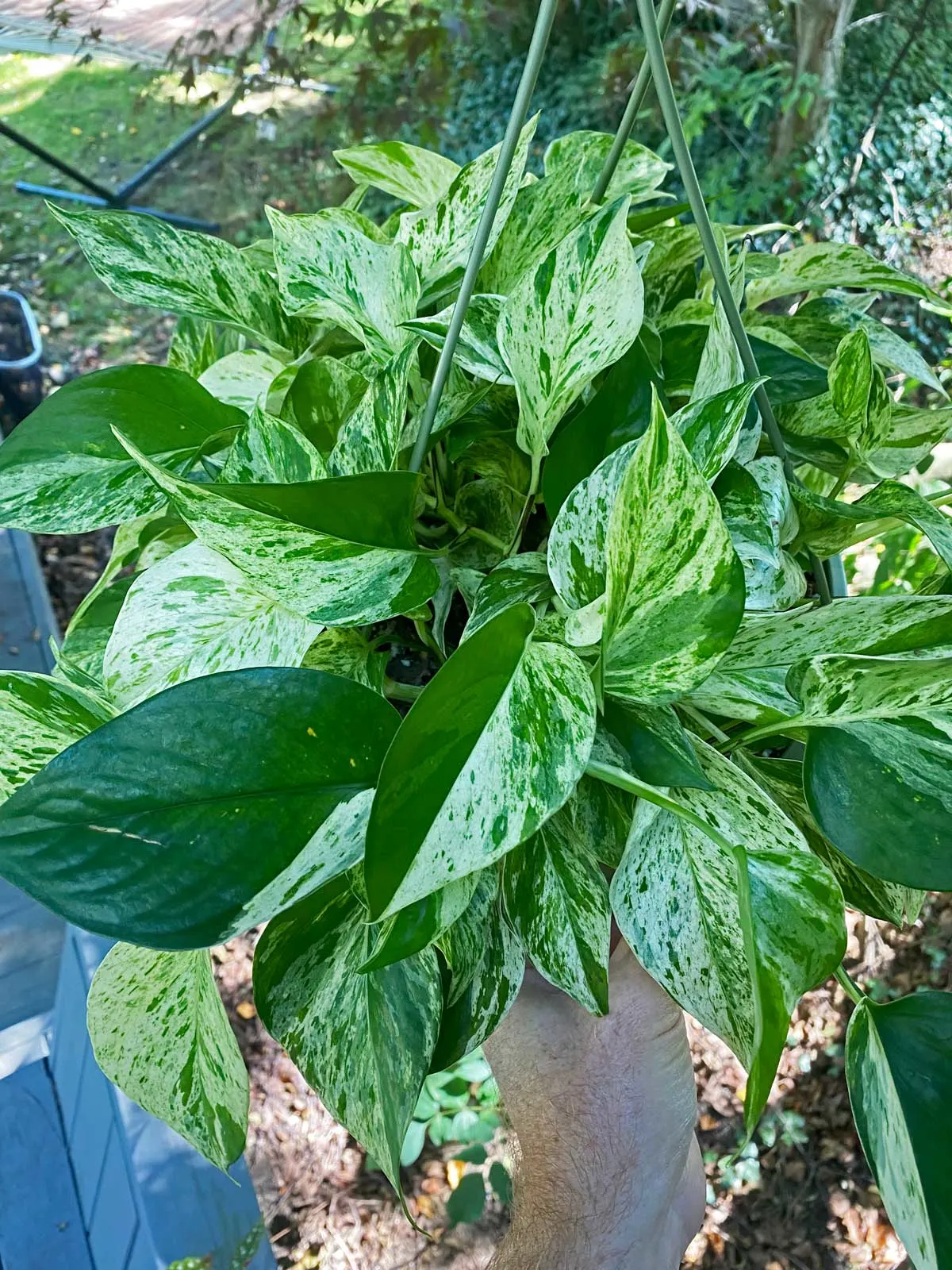
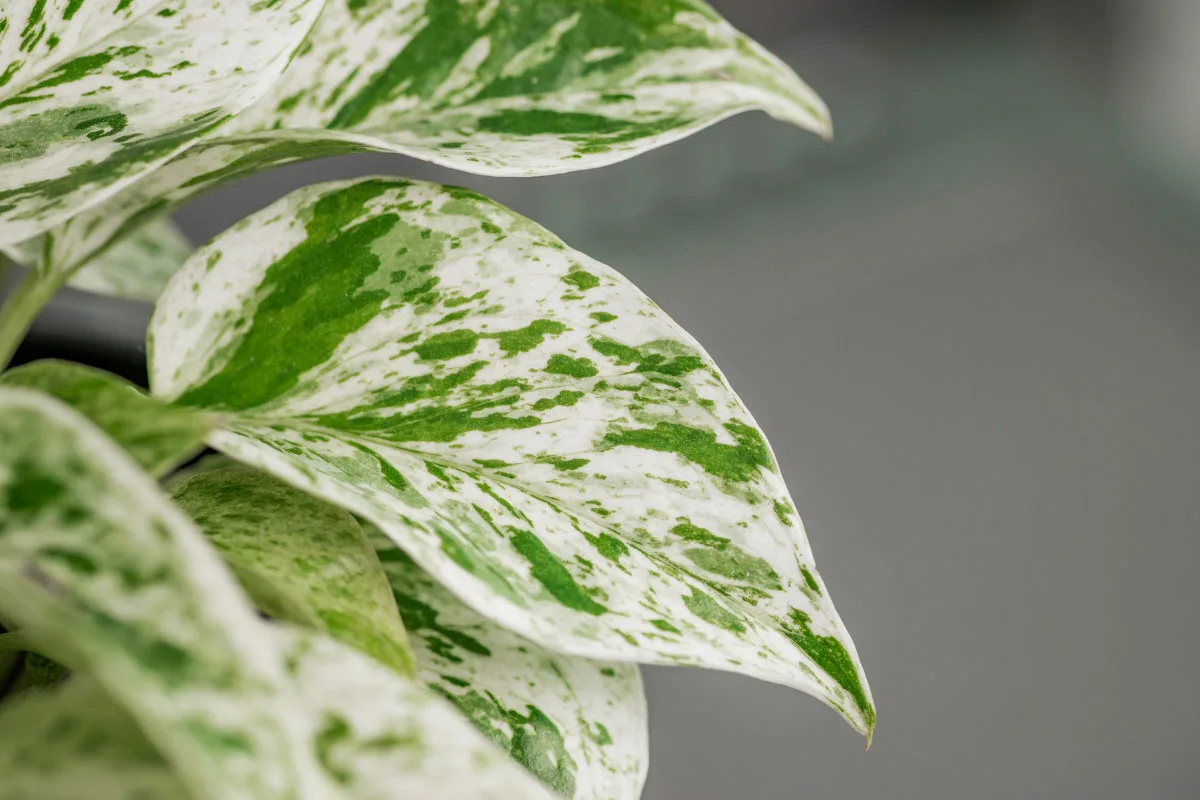
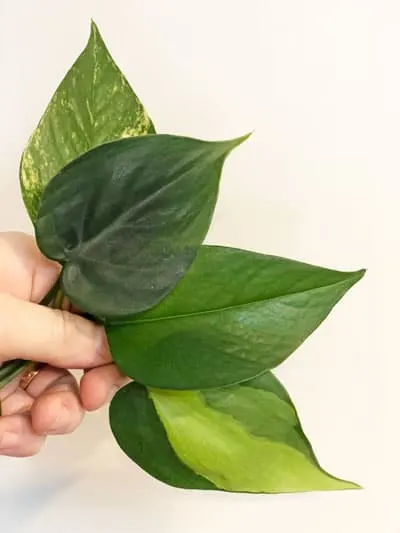
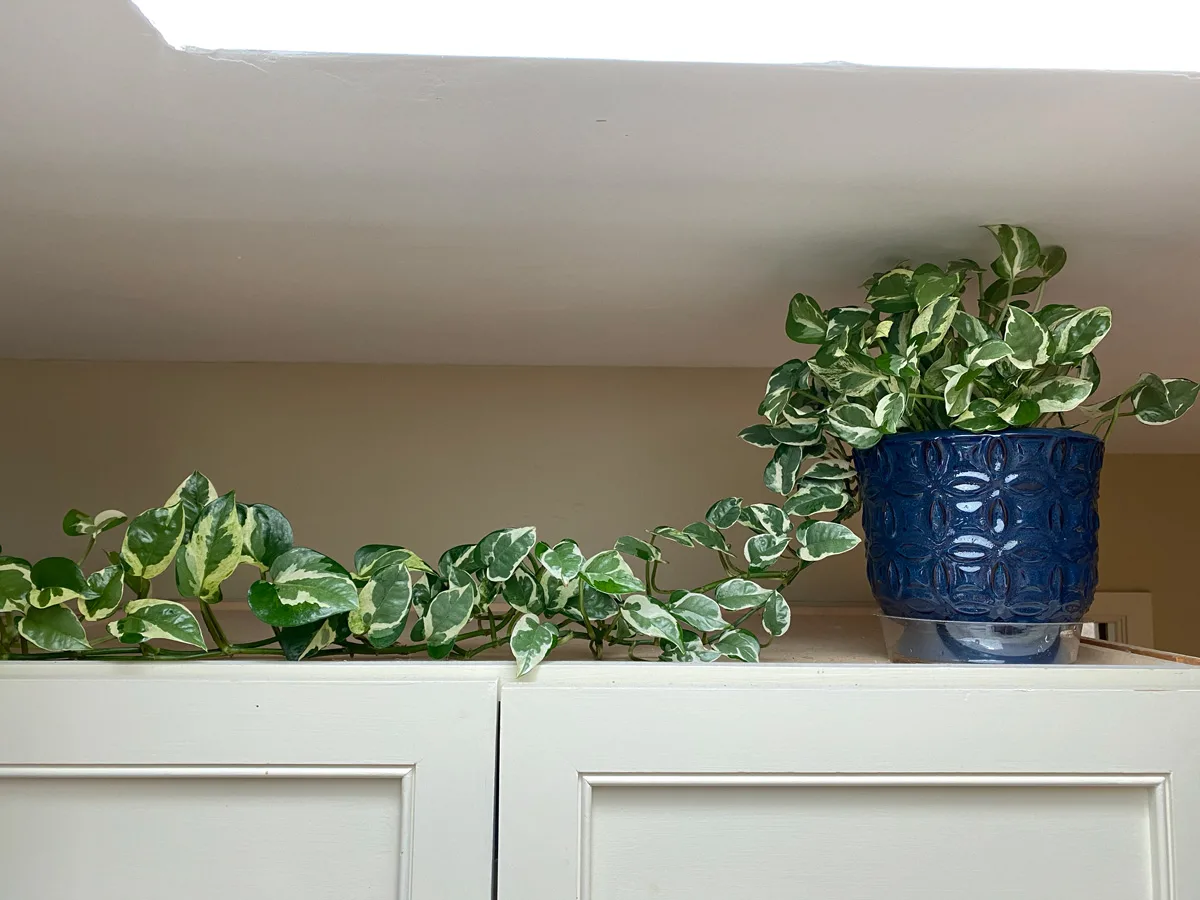
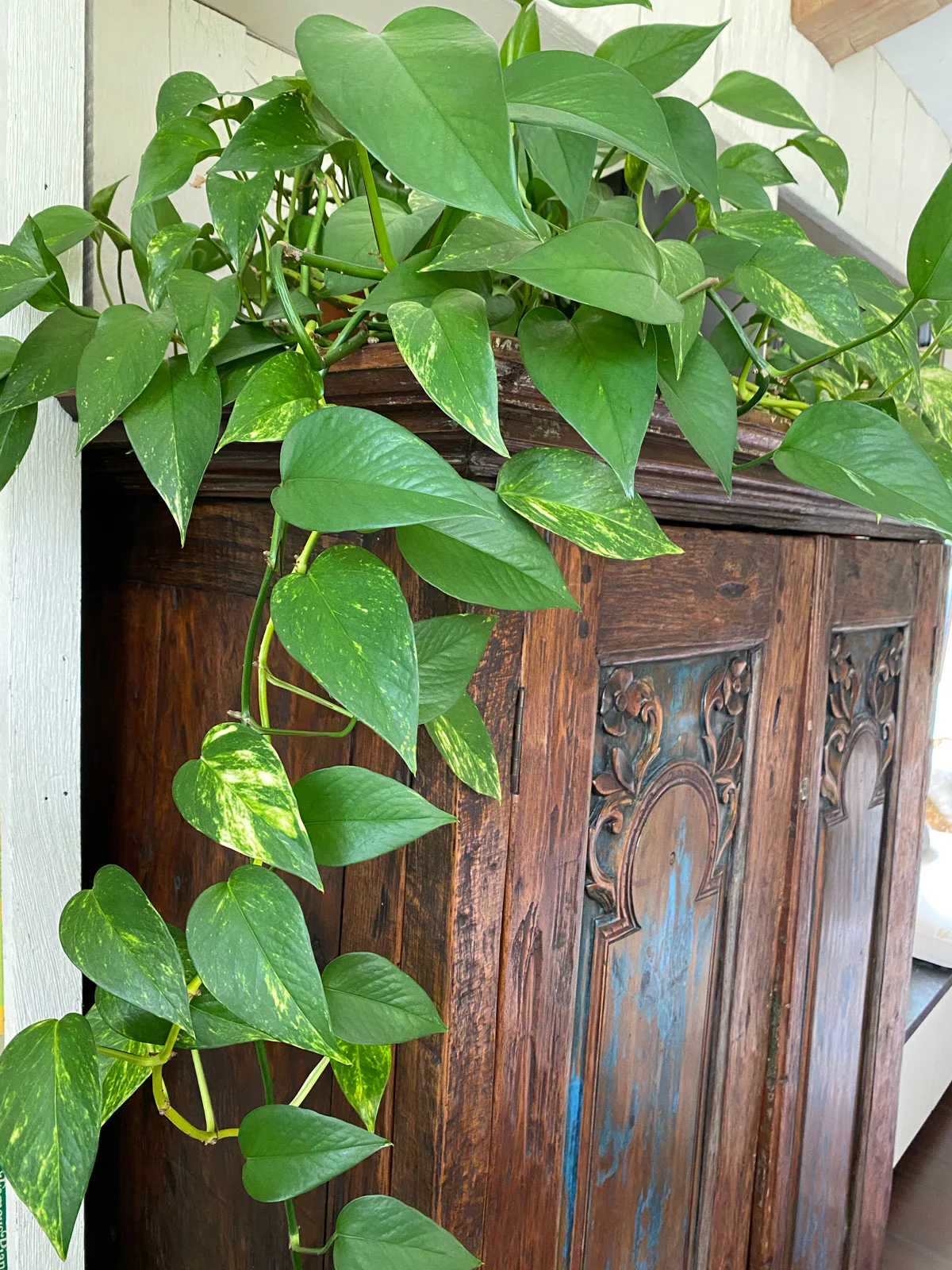
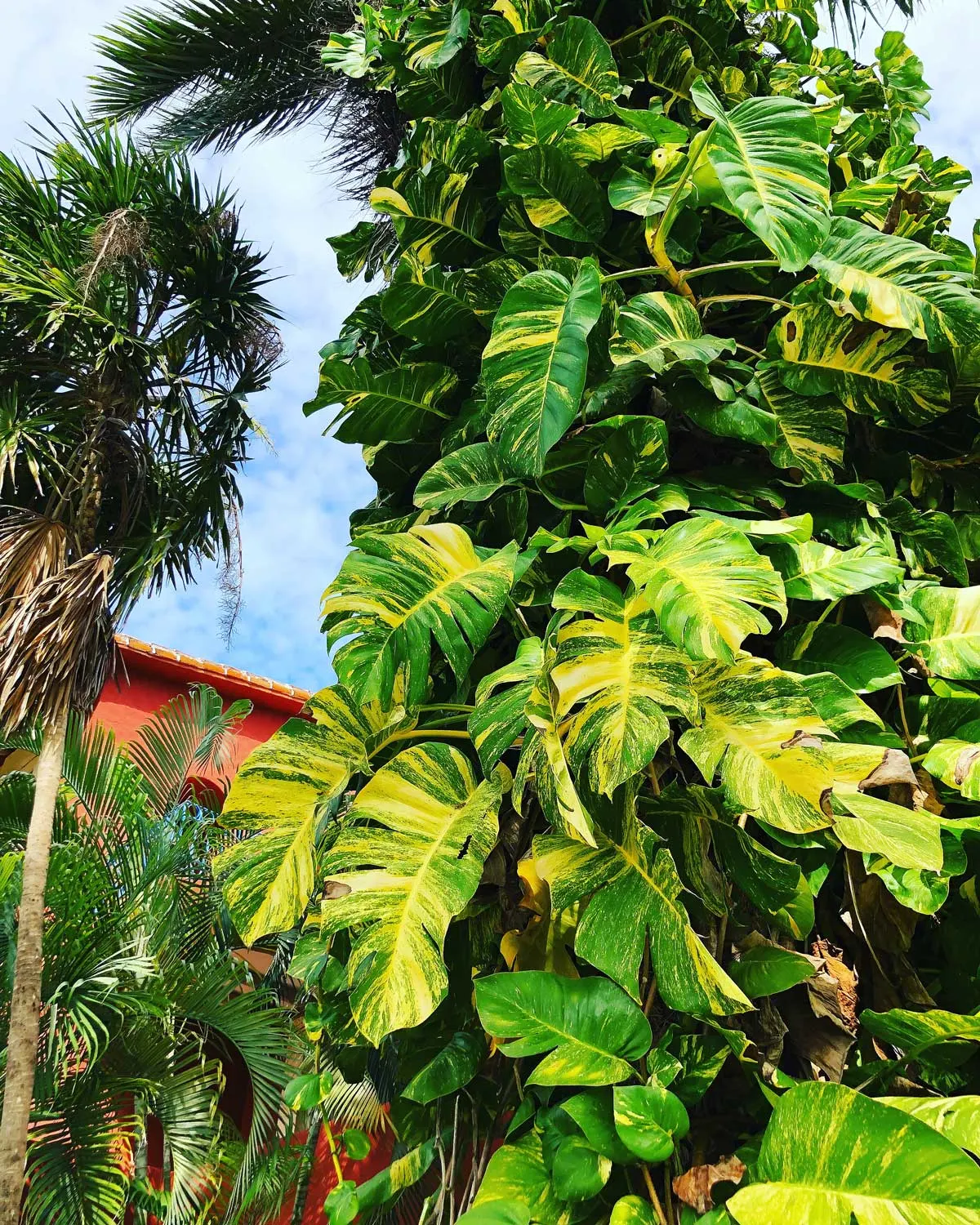
Danielle
Thursday 12th of January 2023
Thanks for the article! My marble queen used to have beautiful creamy white variegation. Now it’s a yellow colour. Why? Is there any way to make the variegation more white again? Thanks!
Raffaele
Thursday 12th of January 2023
Sometimes the variegation on the newer leaves can be a bit different color. Perhaps try giving it more light?
Dyan
Tuesday 14th of September 2021
Enjoy the read. Thanks for sharing info.
Raffaele
Tuesday 14th of September 2021
You're very welcome!